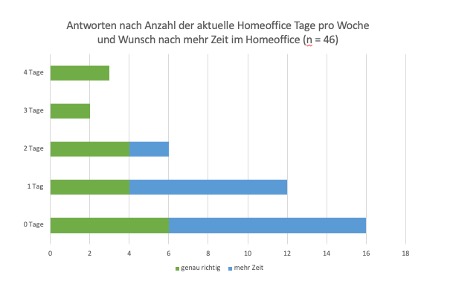In the last 5 years in particular, the importance of virtual teams and home offices in companies has increased. Real growth can be seen here, especially when compared to the early 2000s. Almost every employee now works virtually in some form with their colleagues. This often happens via email or fixed home office days.
The clear advantage of this way of working is clearly the independence of location. It enables companies to put together teams of experts who can work together in an intact system across national, time and company boundaries.
In this article, I would like to explain in more detail which factors have developed into decisive drivers of these working methods. All information reflects a Summary out Chapter 1 of my book Virtual teams and home office from Springer Verlag contrary.
Four decisive drivers for virtual teams and home offices
The restructuring of old ways of working or the integration of new working methods over time is mostly justified by trends, changes or external influences and events.
If you take a closer look at the time interval of the last five years in this regard, it has been found that virtual teams and home offices are based on these 4 drivers in particular:
- Work 4.0 / New Work / Home Office
- COVID-19 pandemic in 2020
- Outsourcing
- Technology discount
In the following, I would like to go into more detail about each individual driver and shed more light on their relevance and influence.
Work 4.0 and home office
Work 4.0
The term “Work 4.0”, often in conjunction with the synonym “New Work”, describes work in the digital age. In addition, however, the increasing use of technological aids in the general structures of companies.
The driving force behind this change from traditional working methods to a modern work concept is primarily Generation Y (born 1980-1995). This places a comparatively greater emphasis on the work-life balance. In the course of this, she is specifically looking for employers who meet these requirements (based on the results according to the Xing study from 2019; for more information, see p. 2 of my book Virtual teams and home office ).
Especially in connection with the prevailing shortage of skilled workers, Generation Y is in a strong negotiating position and is forcing companies to try out special flextime and trust working time models as well as virtual teams and home offices and offer them as an integral part of the employment contract.
Home office
In particular, the latter aspect of the possibility of Home office or Remote work has developed into a valued factor in the search for employees. Basically, this working method describes the option of being able to carry out the assigned activities outside of the company in a freely chosen environment. This trend can also be seen in the following figure:

The graphic is based on a study carried out as part of one of my books (see Lindner and Niebler 2018). The participants were asked whether they found the time in the home office to be sufficient or whether more time was desired.
The results clearly show that the majority of employees already use home offices. Basically there is also the desire for an increase, although this only exists up to a maximum of 2 days per week. In some cases, however, it also emerged that some employees even do not want to work from home.
COVID-19 pandemic in 2020
At the current time, however, the COVID-19 pandemic in particular has developed into a key factor that has contributed to an increase in the number of home office opportunities for employees.
Effects of the COVID-19 pandemic
According to a study by the Institute for Labor Market and Occupational Research (see IAB 2020), 25% of employees in Germany are already working entirely from home during the peak of the pandemic (see graphic below). This corresponds to an increase of 20% compared to the time before COVID-19. However, it has been shown that as the pandemic weakened, the home office rate also fell significantly. According to estimates, it will even fall back to 7.5% (cf. P. 4 of my book Virtual teams and home office ).

Opportunities of the COVID-19 pandemic
However, this is exactly where the government wants to start and use the pandemic as a signpost for new working methods. Federal Labor Minister Hubertus Heil (SPD; see Zeit 2020a) is planning to firmly anchor the home office option in the labor law in the future.
According to a study by the Federal Association of the Digital Economy (2020), many companies are currently still reluctant to offer work from home as a permanent option. At the same time, however (only) just under 60 percent of all employees would like this option (for more information, see p. 4 of my book Virtual teams and home office ).
The main reason for doubt and reluctance on both sides is the great inexperience. Due to the pandemic and the need to work remotely, it has become very clear that many companies are still at an old point of view virtually. In particular, the technical infrastructure and clear regulations were missing here.
At the same time, however, the employees also had to completely reorganize their work from home. On the one hand against the background of the lack of childcare. But especially because of an inadequately equipped workplace in your own four walls.
In addition, mistrust on the part of employers (since work performance cannot be checked so well) and the currently comparatively less efficient work (e.g. due to children screaming in the background) made it difficult to trust the permanent introduction of a home office option.
Outsourcing
But the outsourcing of many companies has also developed into a driver for virtual teams and home offices. This particularly refers to the transfer of corporate taxes to external, often foreign, partners.
Here is the outsourcing in the European area, too Nearshoring Due to the lower barriers like time, cultural and linguistic differences are often easier to organize than that Offshoring (worldwide). Because here the employees of a company have to meet significantly more requirements when they cooperate virtually with the outsourcing provider.
Surveys such as that of Statista (2020) also show that outsourcing is increasingly being anchored as an integral part of the structures of German companies. At the same time, virtual teams and home offices are gaining in importance (for more information, see p. 5f. of my book Virtual teams and home office ).
Technology discount
But access to technology also plays an essential role when it comes to implementing virtual teams and home offices on a sustainable basis. Because in order to be able to work well together outside of the well-equipped company structures, the right mobile software and hardware is required.
What was seen as a real cost problem a few years ago has now developed in the opposite direction. Because thanks to inexpensive software packages such as SaaS (Software as a Service), properly equipping the workforce has long ceased to be a cost-intensive factor. Instead, all important applications can be used over the Internet for comparatively low fees. With the help of a mobile device and after creating a user account, it can also be used quickly and accessed from anywhere.
And in the area of hardware, companies no longer have to spend huge sums to equip their employees adequately for virtual teams and home offices. After all, mobile hardware such as laptops can now be purchased inexpensively for several hundred euros.
Virtual teams and home office: conclusion
Working methods such as virtual teams and home offices are currently still in their walking shoes. So far, they have only been established in companies inferior or not even offered at all. However, this state of affairs is in a revolution, even if many employers still shy away from the deep cuts that this entails.

Nonetheless, it has been shown that a number of factors emerge as key drivers in the growth of these modern working methods.
While the drivers such as Work 4.0, outsourcing and technological benefits have been developing over a longer period of time, the COVID-19 pandemic has joined the ranks as a new trend. In particular, it will have a significant influence on virtual work in the years to come. It has forced many companies to focus more on virtual teams and home offices.
Tip: Read my new book: Virtual Teams & Home Office at Springer Gabler or book me for a talk.
Lindner, D. (2020) – Virtual Teams and Home Office – Guide to Technology, Working Methods and Leadership. Springer Verlag
[fotolia]


